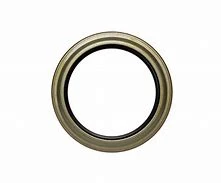automatic transmission input shaft seal
Understanding the Automatic Transmission Input Shaft Seal
The automatic transmission input shaft seal is a critical component of a vehicle's transmission system. This seal plays an essential role in maintaining the integrity and efficiency of the vehicle's transmission, preventing fluid leaks and ensuring optimal performance. In this article, we will explore the functions, importance, and maintenance of the input shaft seal, as well as signs of potential issues.
Function of the Input Shaft Seal
The primary function of the automatic transmission input shaft seal is to prevent transmission fluid from leaking out of the transmission case where the input shaft connects. The input shaft is responsible for transferring power from the engine to the transmission, which in turn propels the vehicle. The seal creates a tight barrier around the shaft, containing the transmission fluid necessary for lubrication and cooling of various internal components.
Importance of the Input Shaft Seal
The input shaft seal is vital for several reasons
1. Preventing Fluid Leaks A well-functioning seal prevents the transmission fluid from leaking, which is essential for the proper operation of the transmission. Low fluid levels can lead to overheating and inadequate lubrication, potentially causing severe internal damage.
2. Enhancing Performance When the seal is intact, the transmission operates smoothly, enabling the vehicle to shift gears without hesitation. This contributes to overall driving satisfaction and performance.
3. Extending Lifespan A healthy transmission system is key to the longevity of a vehicle. Proper seals reduce the risk of repairs and extend the operational lifespan of the transmission.
Signs of a Failing Input Shaft Seal
automatic transmission input shaft seal

Over time, the input shaft seal can wear out due to various factors such as heat, pressure, and age. Recognizing the signs of a failing seal is crucial for timely intervention. Common symptoms of a faulty input shaft seal include
- Transmission Fluid Leaks The most apparent sign is the presence of red or brown fluid pooling under the vehicle. If you notice this, it’s advisable to check the seal's condition.
- Fluid Contamination If you observe debris or sediment in the transmission fluid, the seal may not be performing its job effectively, allowing contaminants to enter.
- Slipping Gears If your vehicle experiences unexpected gear shifts or slipping, it could be due to low fluid levels associated with a compromised seal.
- Unusual Noises Grinding or whining noises from the transmission area may indicate that the fluid levels are insufficient, potentially related to a leaking input shaft seal.
Maintenance and Replacement
Maintaining the input shaft seal typically involves regular checks of the transmission fluid levels and condition. Flushing the transmission fluid at recommended intervals can also help prolong the life of the seal and the transmission itself.
If a seal is found to be leaking, replacement is essential. While it might seem straightforward, replacing the input shaft seal can be a complex process that often requires specialized tools and knowledge. Therefore, it is advisable to seek assistance from a professional mechanic to ensure the job is done correctly.
Conclusion
The automatic transmission input shaft seal may be a small component, but it plays a significant role in the overall functioning of a vehicle’s transmission system. Regular maintenance and prompt attention to any signs of failure can help drivers avoid costly repairs and ensure their vehicles operate smoothly and efficiently. By understanding this crucial part, vehicle owners can take better care of their cars and enjoy a safer driving experience.
-
Understanding the Importance of the Crankshaft Oil Seal in Engine Performance
News Jun.16,2025
-
The Unsung Heroes of Engine Protection: Understanding Automotive Shaft Seals and Oil Seals
News Jun.16,2025
-
Keeping the Engine Tight: The Role of Crankshaft Seals and Gaskets in Oil Control
News Jun.16,2025
-
Complete Protection in Harsh Conditions: A Deep Dive into Cassette Seals
News Jun.16,2025
-
Choosing the Right Oil Seal: A Guide to Trusted Brands and Suppliers
News Jun.16,2025
-
Advanced Sealing Technologies: Exploring the Range of Modern Oil Seals
News Jun.16,2025
-
Your Essential Guide to Car Repair Kits: From Rust to Dings
News Jun.13,2025
Products categories















